Some of the Milwaukee Public Museum's great collections are available online.
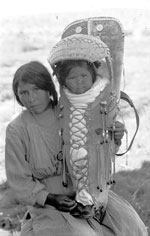 American Indian Cradles and Cradleboards - The Museum’s collection of cradles, cradleboards, and associated accoutrements includes nearly 200 items. MPM possesses 63 cradles and cradleboards in complete or nearly-complete condition, which come from every cultural area in the United States.
American Indian Cradles and Cradleboards - The Museum’s collection of cradles, cradleboards, and associated accoutrements includes nearly 200 items. MPM possesses 63 cradles and cradleboards in complete or nearly-complete condition, which come from every cultural area in the United States.
 Aztalan Collection - Aztalan is the largest and most significant archaeological site in the State of Wisconsin. Located on the Crawfish River in south-central Wisconsin, it is near the town of Lake Mills, about 50 miles west of the City of Milwaukee.
Aztalan Collection - Aztalan is the largest and most significant archaeological site in the State of Wisconsin. Located on the Crawfish River in south-central Wisconsin, it is near the town of Lake Mills, about 50 miles west of the City of Milwaukee.
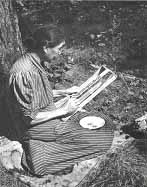 Bandolier Bag Collection - Bandolier bags are large, heavily-beaded pouches with a slit at the top. They have a beaded strap worn diagonally over the shoulder, thus resting the bag at hip level. The design is created using glass beads, a European trade good that replaced the traditional porcupine quills.
Bandolier Bag Collection - Bandolier bags are large, heavily-beaded pouches with a slit at the top. They have a beaded strap worn diagonally over the shoulder, thus resting the bag at hip level. The design is created using glass beads, a European trade good that replaced the traditional porcupine quills.
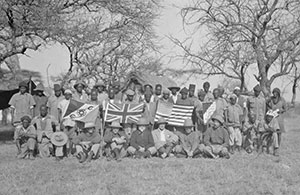 Cudahy-Massee Expedition - The Cudahy-Massee Expedition was the brainchild of Milwaukee Public Museum director, Dr. Samuel A. Barrett. Barrett wished to broaden the museum’s collections and help foster understanding about life in, what was at the time, British East Africa.
Cudahy-Massee Expedition - The Cudahy-Massee Expedition was the brainchild of Milwaukee Public Museum director, Dr. Samuel A. Barrett. Barrett wished to broaden the museum’s collections and help foster understanding about life in, what was at the time, British East Africa.
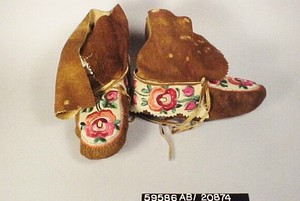 The Dogrib - MPM houses one of the largest Dogrib collections in the United States. The first item came to the Museum in 1941 through Keith Gebhardt, an employee of the museum. Dr. Nancy Oestreich Lurie donated much of the current collection in 1967 and 2000.
The Dogrib - MPM houses one of the largest Dogrib collections in the United States. The first item came to the Museum in 1941 through Keith Gebhardt, an employee of the museum. Dr. Nancy Oestreich Lurie donated much of the current collection in 1967 and 2000.
 Dubay - John Baptiste DuBay (1810-1887), son of a French fur trader and a Menominee woman, was a successful fur trader, interpreter, and entrepreneur. In 1941, archaeologists from UW-Madison and the MPM excavated his homestead near Knowlton, Wisconsin. The DuBay material comprises the only comprehensive historical archaeological collection curated by the Milwaukee Public Museum.
Dubay - John Baptiste DuBay (1810-1887), son of a French fur trader and a Menominee woman, was a successful fur trader, interpreter, and entrepreneur. In 1941, archaeologists from UW-Madison and the MPM excavated his homestead near Knowlton, Wisconsin. The DuBay material comprises the only comprehensive historical archaeological collection curated by the Milwaukee Public Museum.
 East Indians in Trinidad - In 1957, the Milwaukee Public Museum sponsored anthropologist Arthur Niehoff and his wife, Juanita, to conduct field research on the East Indian communities in Trinidad. At the end of the Niehoffs’ field season, the Milwaukee Public Museum acquired one of the United State’s premier collections of Indo-Trinidadian material culture, comprising 100 objects from the East Indian community of Penal. The Niehoffs’ experience also culminated in a book, East Indians in the West Indies, which stands as one of the first comprehensive ethnologies of Trinidadian East Indian populations.
East Indians in Trinidad - In 1957, the Milwaukee Public Museum sponsored anthropologist Arthur Niehoff and his wife, Juanita, to conduct field research on the East Indian communities in Trinidad. At the end of the Niehoffs’ field season, the Milwaukee Public Museum acquired one of the United State’s premier collections of Indo-Trinidadian material culture, comprising 100 objects from the East Indian community of Penal. The Niehoffs’ experience also culminated in a book, East Indians in the West Indies, which stands as one of the first comprehensive ethnologies of Trinidadian East Indian populations.
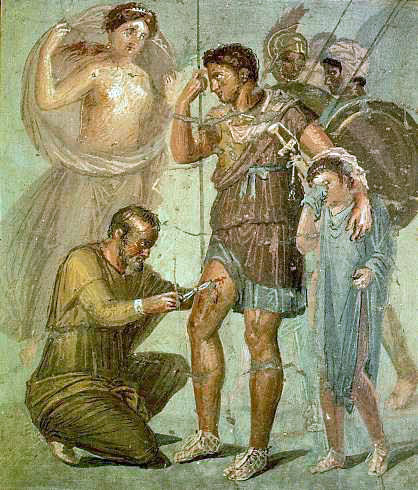 Greco-Roman Medical Equipment (Reproductions) - Systematic excavations of Pompeii began in 1748 by order of King Charles III of Naples and Sicily. The excavations revealed beautiful frescoes, mosaics, and sculptures. Many aspects of Roman daily life were also revealed, from simple cooking vessels to ornate jewelry to household furniture.
Greco-Roman Medical Equipment (Reproductions) - Systematic excavations of Pompeii began in 1748 by order of King Charles III of Naples and Sicily. The excavations revealed beautiful frescoes, mosaics, and sculptures. Many aspects of Roman daily life were also revealed, from simple cooking vessels to ornate jewelry to household furniture.
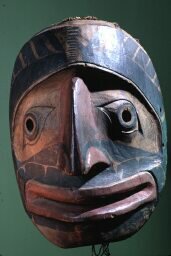 Kwakiutl - For the indigenous First Nations of Canada’s Pacific coast, masks are more than mere decoration or ceremonial props; they are part of a living tradition that connects people to their community, their collective past, their creator, their ancestors, their cosmology, and powerful elemental forces.
Kwakiutl - For the indigenous First Nations of Canada’s Pacific coast, masks are more than mere decoration or ceremonial props; they are part of a living tradition that connects people to their community, their collective past, their creator, their ancestors, their cosmology, and powerful elemental forces.
 Lacandon Collection - The Lacandon are an indigenous Maya-speaking people, numbering between 300 and 500 individuals, who live in the Mexican state of Chiapas.
Lacandon Collection - The Lacandon are an indigenous Maya-speaking people, numbering between 300 and 500 individuals, who live in the Mexican state of Chiapas.
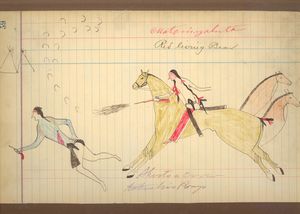 Ledger Art Collection - Plains ledger art was adopted as a means of historical representation for the Indian peoples of the Great Plains during the late 19th and early 20th centuries. Although the Plains Indians had no written language in which to record their history, they did have a long tradition of preserving oral histories pictorially.
Ledger Art Collection - Plains ledger art was adopted as a means of historical representation for the Indian peoples of the Great Plains during the late 19th and early 20th centuries. Although the Plains Indians had no written language in which to record their history, they did have a long tradition of preserving oral histories pictorially.
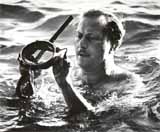 Lake Amatitlán, Guatemala Collection - Former Milwaukee Public Museum director Dr. Stephan F. de Borhegyi was an avid scholar of all things Mesoamerican. In particular, he spent many years studying archaeological finds left by the ancient Maya in and around Lake Amatitlán, Guatemala.
Lake Amatitlán, Guatemala Collection - Former Milwaukee Public Museum director Dr. Stephan F. de Borhegyi was an avid scholar of all things Mesoamerican. In particular, he spent many years studying archaeological finds left by the ancient Maya in and around Lake Amatitlán, Guatemala.
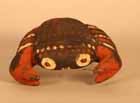 Mambila Collection - The Mambila (Mambilla) are an agricultural people living on a plateau straddling the Cameroon/Nigerian border in Africa. The Milwaukee Public Museum is proud to be the caretaker for the Mambila collection, the largest outside of West Africa.
Mambila Collection - The Mambila (Mambilla) are an agricultural people living on a plateau straddling the Cameroon/Nigerian border in Africa. The Milwaukee Public Museum is proud to be the caretaker for the Mambila collection, the largest outside of West Africa.
 Medieval German Archeological Metal Collection - The MPM German Medieval Archeological Metal collection consists of 173 objects that were all collected in Germany in the late 19th century. Although the objects are quite varied they share a common thread of utility and date between the fifth and 14th centuries C.E.
Medieval German Archeological Metal Collection - The MPM German Medieval Archeological Metal collection consists of 173 objects that were all collected in Germany in the late 19th century. Although the objects are quite varied they share a common thread of utility and date between the fifth and 14th centuries C.E.
 Mediterranean Oil Lamps - The MPM oil lamp collection is comprised of 199 clay, metal, and stone lamps and lamp fragments dating from the Bronze Age (c. 3000 BC) to the 15th century A.D., including 145 examples that can be attributed to the Roman Empire. This collection encompasses nearly every developmental stage in Mediterranean lamp technology, particularly throughout the Roman period, and is one of the largest and broadest collections of its type in the United States.
Mediterranean Oil Lamps - The MPM oil lamp collection is comprised of 199 clay, metal, and stone lamps and lamp fragments dating from the Bronze Age (c. 3000 BC) to the 15th century A.D., including 145 examples that can be attributed to the Roman Empire. This collection encompasses nearly every developmental stage in Mediterranean lamp technology, particularly throughout the Roman period, and is one of the largest and broadest collections of its type in the United States.
 Mexican Kickapoo - The Mexican Kickapoo are a band related to the original Kickapoo tribe first encountered by Europeans in the Great Lakes region during the 1600s. Beginning in the early 19th century, the Kickapoo embarked on a remarkable 250-year migration, with some settling in their current location just outside the village of Muzquiz in the state of Coahuila, Mexico. The MPM Mexican Kickapoo collection includes over 200 photographs, films, field notes, correspondence, and artifacts from a brief expedition in 1954 by Robert Ritzenthaler of the MPM and Frederick Peterson and the 12-year ethnographic study of the tribe conducted by anthropologists Felipe and Dolores Latorre.
Mexican Kickapoo - The Mexican Kickapoo are a band related to the original Kickapoo tribe first encountered by Europeans in the Great Lakes region during the 1600s. Beginning in the early 19th century, the Kickapoo embarked on a remarkable 250-year migration, with some settling in their current location just outside the village of Muzquiz in the state of Coahuila, Mexico. The MPM Mexican Kickapoo collection includes over 200 photographs, films, field notes, correspondence, and artifacts from a brief expedition in 1954 by Robert Ritzenthaler of the MPM and Frederick Peterson and the 12-year ethnographic study of the tribe conducted by anthropologists Felipe and Dolores Latorre.
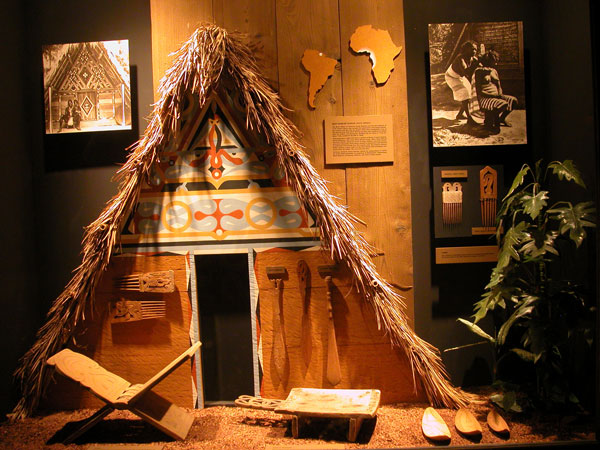 The Ndyuka - Roughly 20 percent of Suriname’s population is Maroon, a term denoting descendants of African runaway slaves from Dutch plantations during the late 17th and early 18th centuries. Maroon culture is strongly rooted in West and Central African cultural traditions, with some Amerindian influences. The largest ethnic group, the Ndyuka, are centralized around Marowijne River, which forms the border between French Guiana and Suriname. The MPM has over 50 artifacts including wooden food stirrers, combs, hammocks, calabash utensils, a baton, a laundry beater, and a white clay (pemba) sample from the Ndyuka.
The Ndyuka - Roughly 20 percent of Suriname’s population is Maroon, a term denoting descendants of African runaway slaves from Dutch plantations during the late 17th and early 18th centuries. Maroon culture is strongly rooted in West and Central African cultural traditions, with some Amerindian influences. The largest ethnic group, the Ndyuka, are centralized around Marowijne River, which forms the border between French Guiana and Suriname. The MPM has over 50 artifacts including wooden food stirrers, combs, hammocks, calabash utensils, a baton, a laundry beater, and a white clay (pemba) sample from the Ndyuka.
 Old Copper Culture - The Old Copper Complex, also known as the Old Copper Culture, refers to the items made by early inhabitants of the Great Lakes region during a period that spans several thousand years and covers several thousand square miles.
Old Copper Culture - The Old Copper Complex, also known as the Old Copper Culture, refers to the items made by early inhabitants of the Great Lakes region during a period that spans several thousand years and covers several thousand square miles.
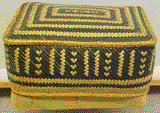 Philippine Basketry Collection - The Philippine collection at the Milwaukee Public Museum contains 235 basketry items -- ten islands and 27 municipalities of the Philippine archipelago are represented in the collection.
Philippine Basketry Collection - The Philippine collection at the Milwaukee Public Museum contains 235 basketry items -- ten islands and 27 municipalities of the Philippine archipelago are represented in the collection.
 Ribbonwork of the Woodland Indians - Ribbonwork is a type of applied decoration used by dozens of Indian tribes in North America. The art form is highly developed among Woodland Indian nations in particular. Similar to beadwork, ribbonwork functions as a decoration appliqué to clothing and other items.
Ribbonwork of the Woodland Indians - Ribbonwork is a type of applied decoration used by dozens of Indian tribes in North America. The art form is highly developed among Woodland Indian nations in particular. Similar to beadwork, ribbonwork functions as a decoration appliqué to clothing and other items.
 Robenhausen - Prehistoric Pfahlbau ("pile dwellings") settlements dotted the Swiss lakeshores between 3,000 and 6,400 years ago, during what is now known as the European Neolithic. One of the best-known examples of a Pfahlbau settlement is Robenhausen, located just east of Zurich, Switzerland. MPM's significant collection of over 200 Pfahlbau artifacts includes both organic and stone objects collected in the late 1800s and early 1900s and donated to the museum by early museum supporters.
Robenhausen - Prehistoric Pfahlbau ("pile dwellings") settlements dotted the Swiss lakeshores between 3,000 and 6,400 years ago, during what is now known as the European Neolithic. One of the best-known examples of a Pfahlbau settlement is Robenhausen, located just east of Zurich, Switzerland. MPM's significant collection of over 200 Pfahlbau artifacts includes both organic and stone objects collected in the late 1800s and early 1900s and donated to the museum by early museum supporters.
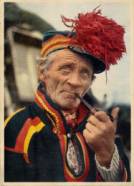 The Sami - The Sami (alternately spelled Saami or Sámi) are one of Europe's oldest indigenous groups. They entered northern Europe from what is now western Russia in prehistoric times, before the Scandinavians, Finns, and Russians began to move in as early as the ninth century.
The Sami - The Sami (alternately spelled Saami or Sámi) are one of Europe's oldest indigenous groups. They entered northern Europe from what is now western Russia in prehistoric times, before the Scandinavians, Finns, and Russians began to move in as early as the ninth century.
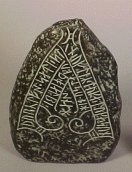 Scandinavian Archaeology - The Scandinavian archaeological collection at MPM consists of lithic (stone) tools and bronze items from prehistoric periods. The collection is also comprised of replicas of Viking Age rune stones largely associated with the very early Medieval Period of Scandinavia.
Scandinavian Archaeology - The Scandinavian archaeological collection at MPM consists of lithic (stone) tools and bronze items from prehistoric periods. The collection is also comprised of replicas of Viking Age rune stones largely associated with the very early Medieval Period of Scandinavia.
 The Tarahumara - The Tarahumara, or self-called Rarámuri, are one of the largest indigenous tribes in North America. With nearly 100,000 people, the tribe has managed to remain relatively uninfluenced by the surrounding Mexican culture until recently. The Milwaukee Public Museum is fortunate to have one of the largest Tarahumara collections in the United States, with well over 350 pieces.
The Tarahumara - The Tarahumara, or self-called Rarámuri, are one of the largest indigenous tribes in North America. With nearly 100,000 people, the tribe has managed to remain relatively uninfluenced by the surrounding Mexican culture until recently. The Milwaukee Public Museum is fortunate to have one of the largest Tarahumara collections in the United States, with well over 350 pieces.

